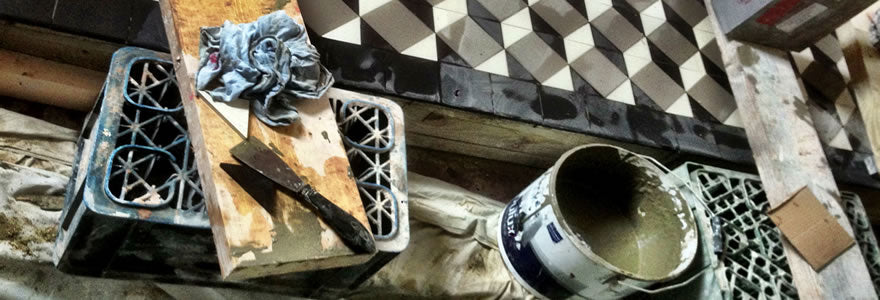Fixing Victorian Floor Tiles

We always recommend that Winckelmans floor tiles are laid by a professional tile fixer. Keen amateurs may want to give it a try, but they will need a lot of patience if they have no experience of geometric tiling.
Because the setting out is so crucial to the finished appearance, sections should always be dry laid before fixing to establish the best spacing. Typically, grout lines will be one to two millimetres for the best appearance, although designs using larger tiles can use wider joins.
Winckelmans tiles are natural clay products so there may be small variations in size and shading between individual tiles. We suggest adjusting grout lines to allow for dimensional differences and we strongly advise you to mix tiles of the same colour from different boxes to ensure any colour variations are evenly distributed.
Tiles are best fixed to a screeded, concrete base. It is possible to lay tiles to a suspended timber floor, but it must be overlaid with plywood at least 6mm thick and screwed down a minimum of 100mm centres. This is a job that again may best be left to a professional as all joints must be properly supported. There must be no ‘bounce’ left in the floor or tiles will crack or come loose.
Victorian floor tiles should always be fixed using a cement-based grey floor tile adhesive. Never use wall tile adhesive. If laying on plywood, the adhesive manufacturer’s instructions regarding primers and enhancers should be followed. If using a thin bed adhesive, an 8mm square notched trowel can be useful. Do not use too thin a bed though: there may be some small variations in tile thickness so you will need enough bed to allow for tamping level. A heavy epoxy float can be useful for tamping.
Winckelmans tiles must always be grouted with a fine grey cement-based floor grout. Do not use coloured grouts as these may stain the tiles irrevocably.






